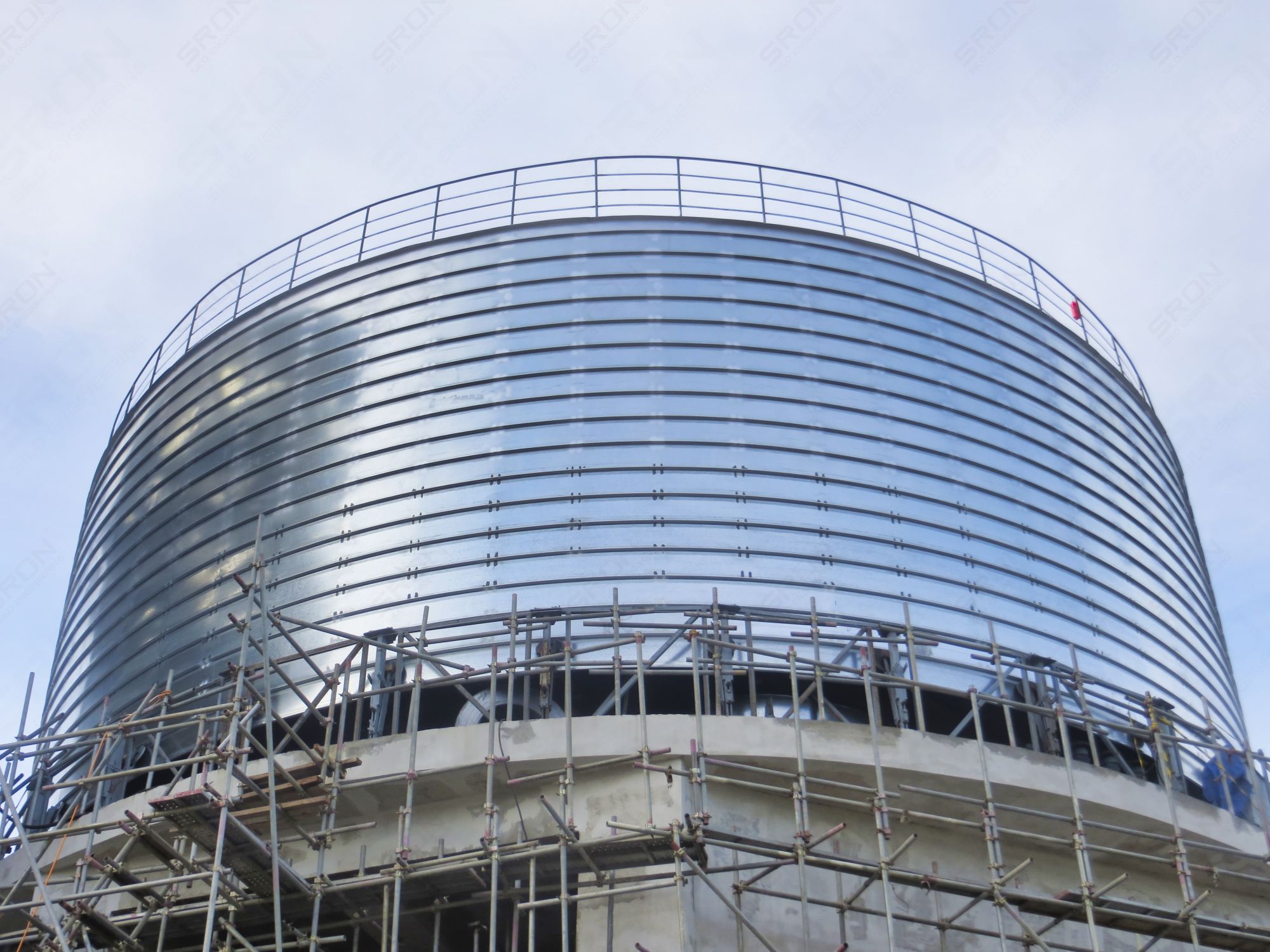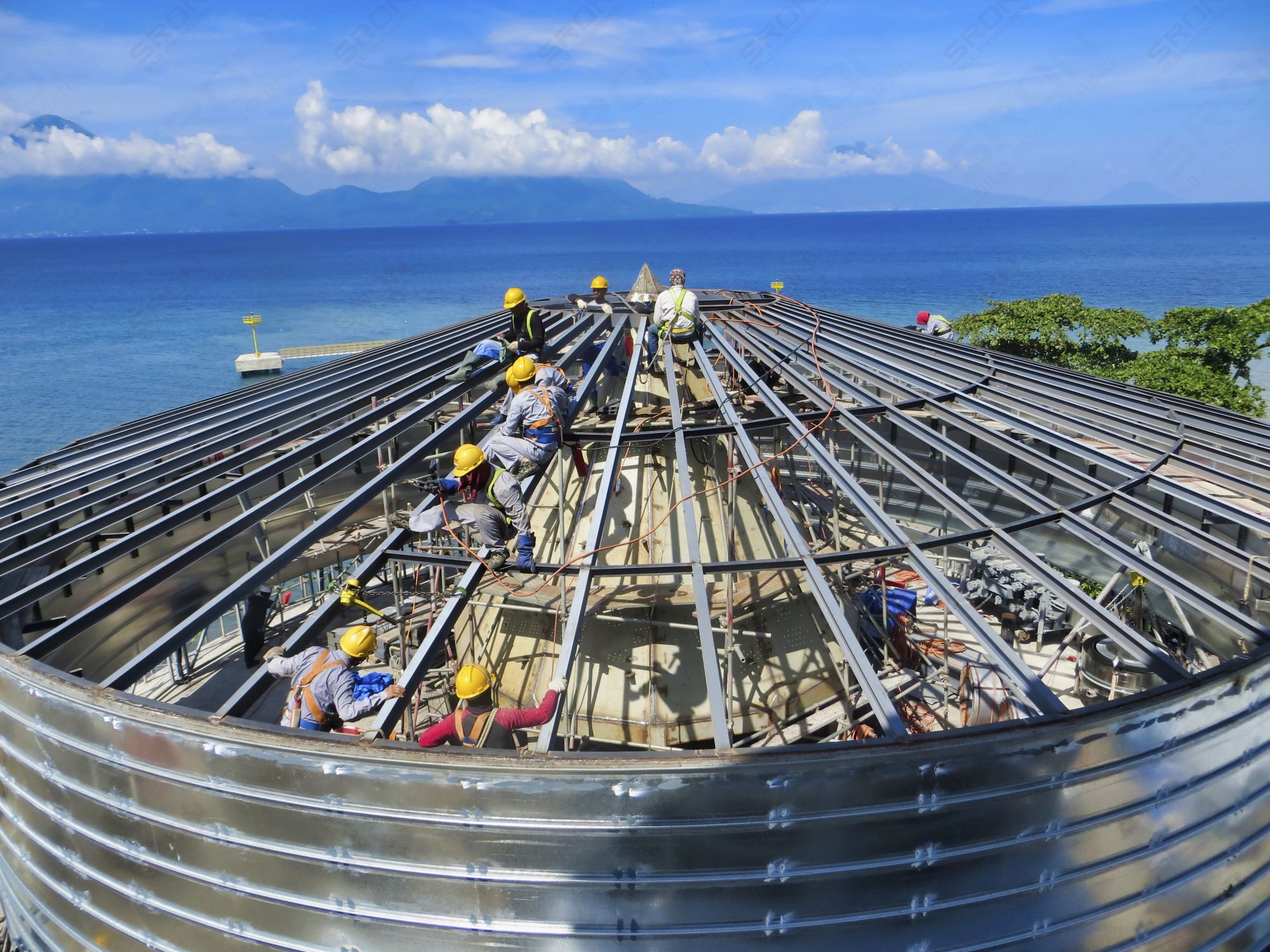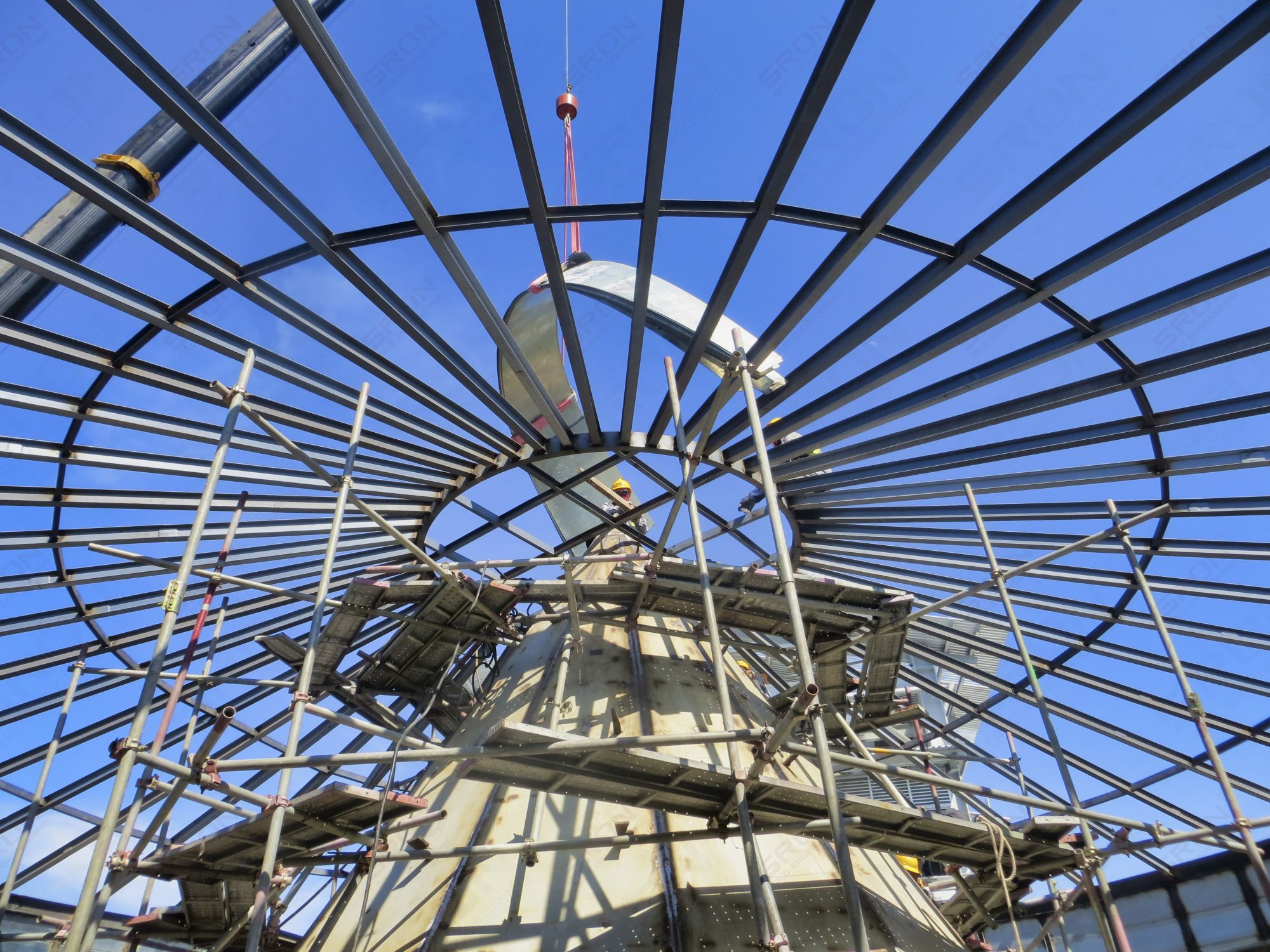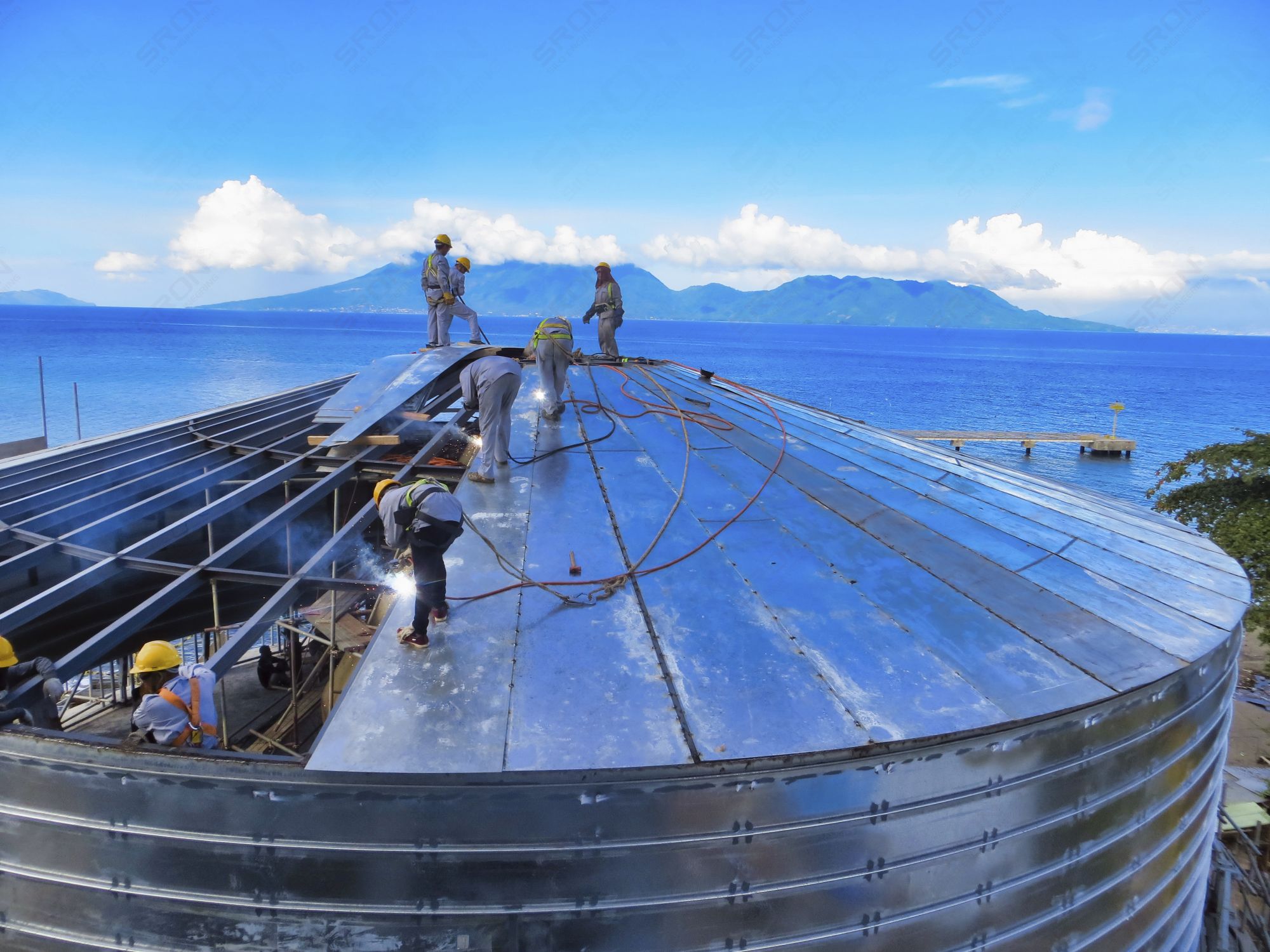Fly ash was once considered a "burden" of thermal power generation. Large amounts of it not only took up land, but also polluted the environment. However, with the development and advancement of technology, the application of fly ash has gradually been recognized. It is now widely used in cement, concrete, building materials and other fields, and has become an important part of the circular economy. In the process of fly ash storage, steel silos, as an efficient, safe and environmentally friendly storage method, are changing the traditional fly ash storage pattern.
1. What is a fly ash steel silo?
Fly ash steel silo is a high-strength steel structure silo specially designed for storing fly ash, providing a closed and safe storage environment to avoid moisture, contamination or loss. According to the structure and construction method, fly ash steel silo is mainly divided into the following categories:
Spiral steel plate silo: It is rolled on site by rolling equipment and has the characteristics of good sealing and stable structure.
Welded steel silo: Assembled by welding technology, high strength, suitable for large-capacity storage.
Compared with traditional open-air storage or cement silo storage, fly ash steel silo has many advantages:
Short construction period: quick construction and can be put into use quickly.
Low investment cost: compared with traditional concrete storage silos, the construction cost of steel silos is lower.
Large storage capacity: can be customized according to demand, and the capacity of a single silo can reach tens of thousands of tons.
Good environmental performance: closed storage, reducing dust pollution, and meeting environmental protection standards.
2. How does fly ash enter the steel silo?
Fly ash is the fly ash produced by coal-fired boilers in thermal power plants. It is obtained by collecting fine particles in the flue gas through a collection device (such as an electrostatic precipitator). Due to its high fineness and light particles, corresponding dust and moisture prevention measures need to be taken during storage.
The transportation of fly ash from the collection point to the steel silo mainly adopts the following two methods:
Pneumatic conveying
Principle: Use air power to transport fly ash to the steel silo through a sealed pipe.
Equipment: Including blower, conveying pipe, separator, etc.
Advantages: Closed conveying, no dust pollution, suitable for long-distance conveying.
Note: The air pressure needs to be controlled to prevent pipeline blockage.
Mechanical conveying
Method: Common mechanical conveying equipment includes screw conveyors, bucket elevators, belt conveyors, etc.
Comparison with pneumatic conveying: Mechanical conveying has low energy consumption, but the conveying distance and height are limited, and it is suitable for short-distance conveying.
3. How to store fly ash in steel silo?
Entering the warehouse
After the fly ash enters the steel silo, it needs to be reasonably distributed to prevent local accumulation from affecting subsequent material collection. Pneumatic conveying is usually used for uniform distribution to ensure uniform distribution of fly ash in the silo.
Storage management
Ventilation: Fly ash particles are small and easy to clump when wet, so the steel silo is equipped with a ventilation system to maintain air circulation and reduce the humidity in the silo.
Temperature and humidity control: The environmental monitoring system in the silo can monitor the temperature and humidity in real time to prevent the fly ash from condensing into lumps due to excessive humidity.
Anti-caking measures: In order to avoid caking of fly ash after long-term storage, special equipment such as airflow arch breaking device can be used, or an appropriate amount of anti-caking agent can be added to the fly ash.
Monitoring
Modern fly ash steel silos are usually equipped with automatic monitoring systems, including:
Material level monitoring: Real-time display of the amount of storage in the silo to prevent overflow.
Safety alarm system: Automatic alarm in abnormal situations to ensure safety.
4. How to take fly ash out of steel silo?
Discharging method
Gravity discharging: using the fluidity of fly ash, relying on gravity to flow out from the bottom outlet of the silo.
Pneumatic discharging: using negative pressure pneumatic conveying to transport fly ash to the end of use.
Other methods: such as screw conveyor, scraper conveyor, etc.
Discharging equipment
Screw conveyor: suitable for short-distance transportation.
Scraper conveyor: suitable for large-flow continuous discharging.
Pneumatic conveying equipment: suitable for long-distance transportation to cement plants or mixing stations.
5. Application of fly ash steel silo
Thermal power plant: used to store and process fly ash generated by coal-fired power plants.
Cement plant: fly ash is an important additive in cement production.
Building material plant: produces aerated concrete, concrete blocks and other building materials.
As an efficient, environmentally friendly and economical storage method, fly ash steel silo plays a vital role in the comprehensive utilization of fly ash. With the advancement of environmental protection policies and the continuous progress of technology, the application prospects of fly ash steel silo will be broader, and it will play a greater role in promoting resource recycling and green development.





.jpg)